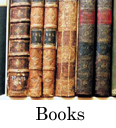The Friend who presides over business meetings, takes the minutes, and handles the correspondence of the meeting.
The office of Clerk was established with its current expectations in the late 1600s. At that time, the office required special skills, as literacy was not as universal (even among Friends) as it was in later generations. Originally, the office of Clerk had no special significance, as a "clerk" was simply a recorder. At this time, Clerks often only made minutes when the meeting had arrived at a decision and did not always minute discussions in which Friends did not reach unity. This gives a slightly imprecise understanding of what took place in a particular business meeting.
The office of Clerk was redefined slightly in the 19th century. By 1800, the office of Clerk had taken on some elements of status among Friends. Prominent public Friends were being chosen to serve as Clerk, which fostered an understanding that one role of the Clerk was to help guide the meeting to particular decisions. This new phase of clerking, represented by Samuel Bettle and William Evans in Philadelphia and Jane Plummer in Ohio, was widely opposed at the time. Job Otis of New York was prominent among Friends who believed that the Clerk should be limited to the servant of the meeting.
By the 20th century, Friends were less interested in appointing strong Clerks. The role of Clerk was adjusted when the men's and women's business meetings were merged. Often in these cases, the former men's Clerk would continue as the Clerk of the joint session business meeting, and the former women's clerk would serve as the assistant clerk.
In other branches of Friends, a new system was introduced in the 1950s. At the time, these other groups developed the notion that the position of Clerk was too difficult for a single person to handle (though it had been done remarkably well for almost three centuries at that time). These other groups partitioned the responsibilities of Clerks into what they call "presiding clerk" and "recording clerk."
In Ohio YM, the expectations of the Clerk were greatly increased in the 1990s. Susan Smith, Clerk of Ohio YM (1988-2001), completely redefined clerking. She initiated the process of writing minutes incorporating phrases that had been spoken by various Friends during the discussion (sometimes called "clippings" or "snippets") to capture the sense of the meeting. The resulting minutes conveyed an authority that had not been experienced prior to this time. Her contributions set a new and higher bar for Clerks that has carried into the 21st century. |






